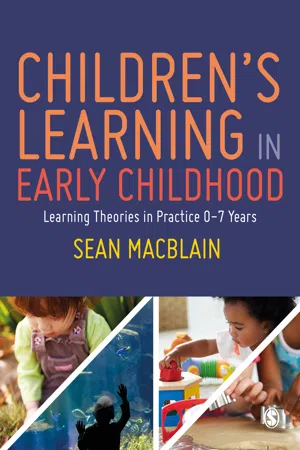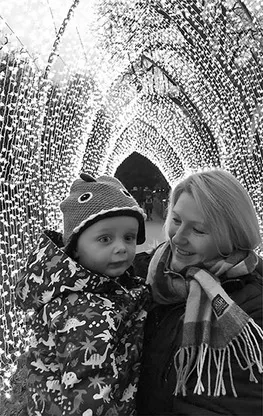The Emergence of Childhood
The concept of ‘child’ has not always been well understood, and children in past centuries were all too often forced to endure conditions and expectations of them that were born largely out of ignorance and a gross lack of understanding of their emotional, social and intellectual development. Sadly, it remains the case that the concept of what it means to be a child is poorly understood in many parts of the world, and across the globe countless numbers of young children continue to endure harsh and uncompromising conditions that would have been more familiar to children living in past centuries in the UK. Just over a decade ago, Hicks (2004) drew attention to the need for all of us to acknowledge the increasingly global context within which children now grow up, a view that has been so starkly accentuated by the recent and devastating COVID-19 pandemic:
We can only understand life today in our own communities if it is set in the wider global context. What happens elsewhere in the world constantly impacts on our daily lives even if we have not been aware of it… (p. 19)
Fortunately, there have been those in past generations who, in challenging the thinking of their time, have left us with a legacy that has at its core a strong sense of valuing what it means to be a ‘child’.
John Locke (1632–1704)
Locke emphasised the importance of seeing childhood as that most special time in the lives of individuals; children, he pronounced, should not be ‘hindered’ from being children. This was indeed a radical view when one considers that at the time the very idea of childhood as a distinct stage in the lives of young people was given little if any thought by most adults, and the majority of children received little if any formal learning. Locke understood the importance of adults refraining from exercising too much control over learning in childhood, which he believed ‘should not be a burden’ and should not ‘be imposed… with tasks that might become ‘irksome’ and ‘inhibit learning’ (MacBlain, 2018a: 13). Locke believed that as children grow, they need to apply reason to how they understand and interpret their worlds and, significantly, that they learn to question what they are told. This was important given the levels of superstition that existed at the time. Locke suggested that children begin life as if they were a ‘blank slate’, sometimes referred to as tabula rasa, and it is on this blank slate that all their experiences, which are gained through the senses, are written.
A key aspect of Locke’s approach that continues to define thinking and practice even today was that of empiricism. Central to empiricism is the notion of ‘empirical thinking’, which lies very much at the heart of the ‘sciences’ whereby phenomena are observed from which data are gathered and then quantified. It was this approach that came to underpin the behaviourist tradition, offering them a methodology, key to which was the observation, recording and measurement of behaviours, and therefore learning (Gross, 1992; Smith et al., 2003). It needs to be recognised that the empiricist view of children’s learning is different to that of the nativist view where it is argued children inherit their abilities. In the decades that followed John Locke, the celebrated pioneer Rousseau developed the concept of what it means to be a child and how learning in childhood needed to be understood as being different.
Jean-Jacques Rousseau (1712–1778)
Like Locke, Rousseau embraced the concept of ‘child’ and saw the importance of emotional and social development for children’s learning; he was in this respect ahead of his time. Rousseau presented his ideas on children’s education in a much-celebrated book, Emile (1762/1911), in which he introduced his readers to the life events of a boy named Emile as he progresses through infancy and childhood, and into adulthood. A dominant feature in the thinking of Rousseau’s time was that children were born with ‘original sin’, and that a primary function of education was to purge children of this sin and the associated guilt that came with it. It was also popularly believed that children were born with impulses, which if not addressed would lead to ‘wickedness’. Rousseau, in contrast, proposed that all children were born ‘good’ and, importantly, that what they inherit at birth is what makes up most of their individual potential. He believed a key purpose of education to be the channelling of these impulses in a positive direction, thereby giving children a clearer sense of purpose. He also recognised that society played a substantial role in influencing learning, and that it could be a potential cause for harm as well as good. Children’s education, he proposed, should follow the natural growth of the child and pass through stages, the first being from birth to 12 when they are influenced predominantly by impulses, and the second being up to the age of 16, when reason takes over. He saw the role of the tutor as central to developing positive and meaningful environments for learning, as it was through this process that children would come to understand the worlds in which they lived, gain respect for themselves and others, and learn the consequences of their actions, the difference between right and wrong, and honesty and humility.
Seeing Nature in Children’s Learning
Johann Pestalozzi (1746–1827)
Today, we take for granted the place of nature in early learning, but this was not always so. Sadly, it remains the case that too many children across the world grow up in urbanised environments where the natural world plays little if any part in their education. Like Locke and Rousseau, Pestalozzi recognised the concept of ‘child’ and saw nature as a key element in the learning of young children; this is illustrated in his belief that the primary aim of education was that of developing the head, the heart and the hands. Pestalozzi’s ideas on learning and the importance of nature in childhood were captured some decades ago in the following quotation, cited by Silber (1965): ‘I wish to wrest education from the outworn order of doddering old teaching hacks… and entrust it to the eternal powers of nature herself’ (p. 134). Pestalozzi believed that children’s early learning should involve active engagement in activities and the use of objects that were part of their natural environment and, like Locke, he believed children should be free to follow their own interests. Importantly, he was one of the first pioneers to view teaching as a subject that should be studied in its own right, and because of this he is often referred to as the ‘father of pedagogy’. It can be said that Pestalozzi’s ideas on children’s learning were ahead of their time, for he believed that children need to learn by engaging with the world around them through their actions and within their environments, and being encouraged by adults to pursue their own interests.
Early childhood is a time of wonder
Valuing Emotional Growth in Early Learning
Sigmund Freud (1856–1939) and the Psychodynamic Tradition
Locke, Rousseau and Pestalozzi all understood the importance of recognising what it is to be a child and how emotions impact significantly on learning in early childhood. Later, towards the end of the 19th century, a major shift in thinking began to emerge as philo-sophers and theorists wrestled with the emerging discipline of psychology; this shift accelerated with the emergence of psychodynamics and most notably the work of Freud, who placed enormous emphasis on what it means to be a child and how experiences in early childhood affect later development and learning. In his original work Freud proposed that at the core of individual development are two determining elements, characterised by pleasure and by tensions; tensions, he suggested, arise from sexual energy (the libido), with pleasure emanating from a release of this sexual energy. It should be emphasised that Freud used the term ‘sexual’ in a broad sense to account for thoughts and actions that individuals find pleasurable. Freud also proposed that children and young people move through a series of stages: Oral, Anal, Phallic, Latency and Genital, with the first of these following birth. His ideas were then developed by others and applied specifically to learning in early childhood, most notably perhaps by Susan Isaacs (discussed later in Chapter 2).
Chapter Link
The ideas of Freud and Isaacs are explored in greater detail in Chapter 2.
Recognising the Value of Play in Early Learning
Whilst the early pioneers saw the value of play in early childhood and how play was central to learning, they were largely isolated in their thinking from popular practice. It must be remembered that learning in previous generations was for the most part formal and highly prescriptive, and at times brutal, as indicated by the historian Ruth Goodman who wrote about children’s education in the Victorian era, as follows:
Many teachers firmly believed that an error in a child’s work was the result of ‘not trying’, of the child not having listened properly to their instruction. Child after child was beaten for their spelling mistakes, grammatical errors, incorrect sums and messy handwriting. (Goodman, 2013: 292)
One pioneer, however, whose ideas focused on the value of play in children’s learning, and who drew heavily on the ideas of Locke, Rousseau, and Pestalozzi, was Froebel.
Friedrich Froebel (1782–1852)
Froebel (1887) was one of the first pioneers to fully embrace play as central to children’s learning and their emotional and social development. Froebel saw the value of play in supporting children’s learning and, more particularly, how play could advance and extend thinking and learning. He believed, for example, that children could express their individual nature through play, and it was this idea that lay very much at the heart of his philosophy of learning. Froebel’s significant and enlightened contribution to our understanding of the importance of play in children’s learning was expressed most eloquently by Tizard and Hughes (1984: 4), who drew attention to how the kindergarten and nursery school begun by Froebel had ‘freed’ young children from the harsh and overly prescriptive learning of their time, when children were typically made to sit passively, be drilled by their teachers, and subjected largely to memorising and rote learning.
In developing his ideas on the value of play in learning, Froebel developed an array of educational materials which he believed could support and extend learning in children. These materials, or ‘gifts’ as he called them, included such items as objects of different shapes that could be employed by teachers to stimulate children’s thinking and learning, for example: Gift 1: Small soft balls knitted or made of rubber with three being in the primary colours, red, yellow and blue, and the other in the secondary colours of green, orange and purple. Gift 2: A box in which was contained a wooden cylinder, a cube, and a sphere with holes. Gift 3: A box with eight one-inch cubes made of wood. Gift 4: New shapes of varying sizes and dimensions. Gift 5: A box, different in size to others with blocks of a different size and of a greater numb...



